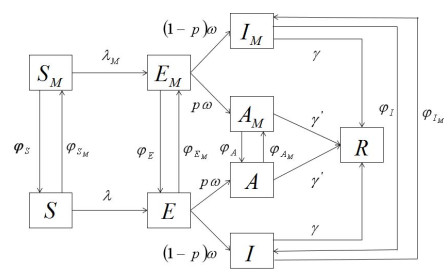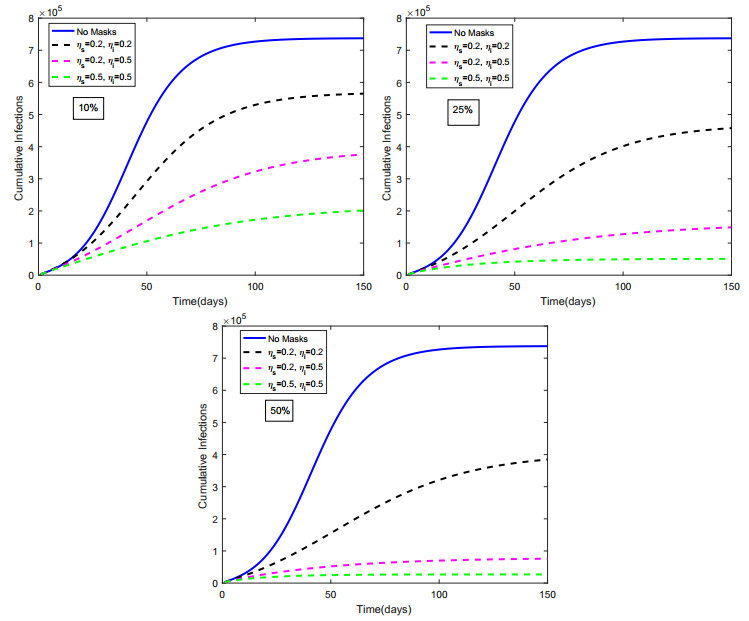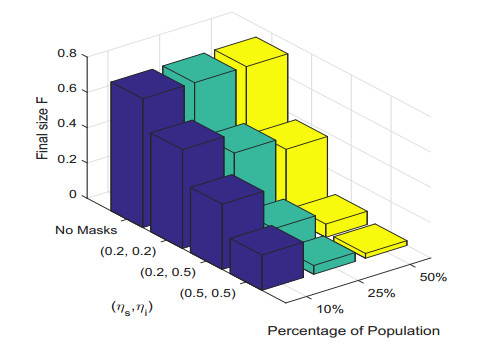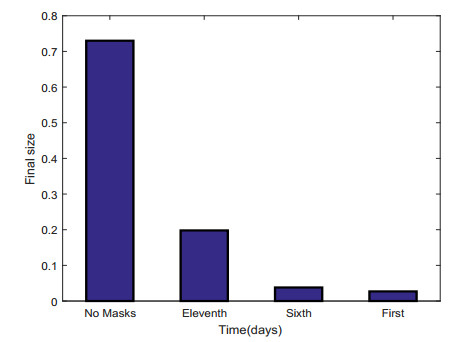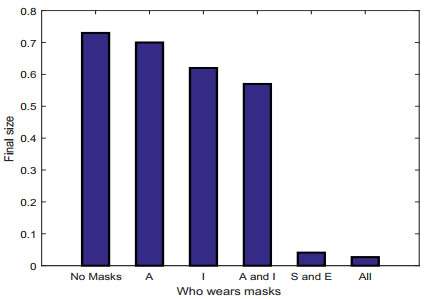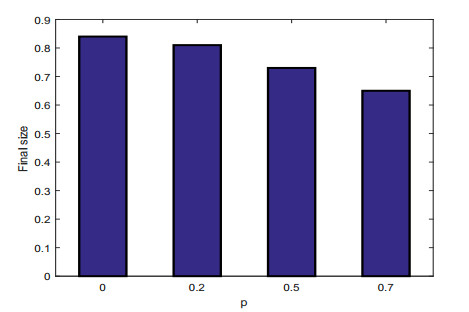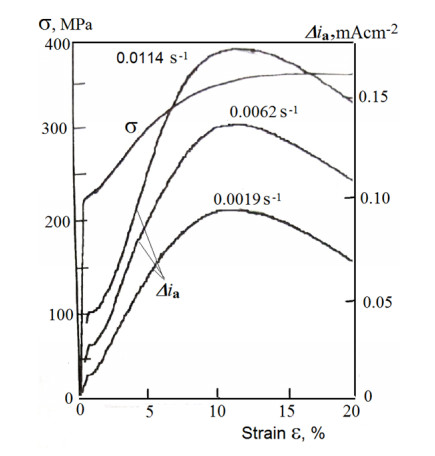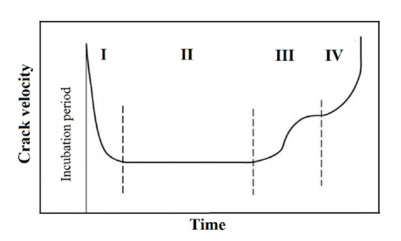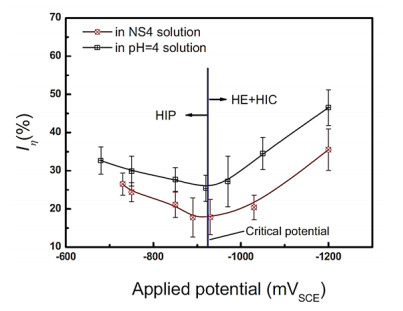|
[1]
|
National Energy Board (1996) Public inquiry concerning stress corrosion cracking on Canadian oil and gas pipelines: report of the inquiry. MH-2-95, Canada.
|
|
[2]
|
Canadian Energy Pipeline Association (1996) Submission to the National Energy Board. Proceeding MH-2-95, 2.
|
|
[3]
|
Gareev AG, Ivanov IA, Abdullin IG, et al. (1997) Prognozirovaniye Korrozionno-Mekhanicheskikh Razrusheniy Magistral'nykh Truboprovodov (Prediction of Corrosion/Mechanical Damage to Main Pipelines), Moscow: Gazprom IRZ, 1-170. (in Russian)
|
|
[4]
|
Parkins R (2000) A review on SCC of high-pressure pipelines. NACE-International Corrosion Conference Series, 00363.
|
|
[5]
|
Arabey AB, Knoshinski Z (2006) Korrozionnoe Rastreskivanie Pod Napryazheniem Trub Magistral'nykh Gazoprovodov. Atlas (Stress Corrosion Cracking of Main Gas Pipelines. Atlas), Moscow: Nauka, 1-106. (in Russian)
|
|
[6]
|
King F (2010) Stress corrosion cracking of carbon steel used fuel containers in a Canadian deep geological repository in sedimentary rock. TR-2010-21, Nuclear Waste Management Organization, 34.
|
|
[7]
|
Meresht ES, Farahani TS, Neshati J (2011) Failure analysis of stress corrosion cracking occurred in a gas transmission steel pipeline. Eng Fail Anal 18: 963-970. doi: 10.1016/j.engfailanal.2010.11.014

|
|
[8]
|
Cheng YF (2013) Stress Corrosion Cracking of Pipelines, Hoboken: John Wiley & Sons, 257.
|
|
[9]
|
Alimov SV, Arabey AB, Ryakhovskih IV, et al. (2015) The concept of diagnosis and repair gas mains in regions with high susceptibility to stress corrosion cracking. Nat Gas Indust 724: 10-15. (in Russian)
|
|
[10]
|
Gamboa E (2015) Inclined stress corrosion cracks in steel pipelines. Corros Eng Sci Technol 50: 191-195. doi: 10.1179/1743278215Y.0000000006

|
|
[11]
|
Chen W (2016) An overview of near-neutral pH stress corrosion cracking in pipelines and mitigation strategies for its initiation and growth. Corrosion 72: 962-977. doi: 10.5006/1967

|
|
[12]
|
Canadian Energy Pipeline Association (CEPA) (2015) Recommended Practices for Managing Near-neutral pH Stress Corrosion Cracking 3rd Edition, 158. Avaliable from: https://www.cepa.com/wp-content/uploads/2016/11/Stress-Corrosion-Cracking_3rdEdition_CEPA_FINAL.pdf
|
|
[13]
|
Malkin AI, Marshakov AI, Arabei AB (2009) Processes of crack initiation and propagation on the steels of main pipelines. Part I: modern understanding of the mechanisms of stress corrosion cracking of pipeline steels in aqueous media. Corros Mater Prot 10: 1-16.
|
|
[14]
|
Parkins RN, Blanchard WK, Delanty BS (1994) Transgranular stress corrosion cracking of high-pressure pipelines in contact with solutions of near neutral pH. Corrosion 50: 394-408. doi: 10.5006/1.3294348

|
|
[15]
|
Ryakhovskikh IV, Bogdanov RI, Arabey AB (2019) Regularities of pipelines stress corrosion cracking. 14th Pipeline Technology Conference, 1-13.
|
|
[16]
|
Ryakhovskikh IV, Bogdanov RI, Rodionova IG et al. (2018) Regularities of stress corrosion cracking of pipe steels. 9th Eurasian Scientific and Practical Conference "Strength of Heterogeneous Structures-PROST 2018", 191. (in Russian)
|
|
[17]
|
Gutman EM (1967) A transl. of Fiziko-khimicheskaya mekhanika materialov, Academy of Sciences of the Ukrainian SSR. Sov Mat Sci 3: 190-196, 304-310, 401-409.
|
|
[18]
|
Gutman EM (1974) Mechanochemistry of Metals and Corrosion Prevention, Moscow: Metallurgy, 231. (in Russian)
|
|
[19]
|
Gutman EM (1994) Mechanochemistry of Solid Surfaces, New Jersey-London-Singapore: World Scientific, 332.
|
|
[20]
|
Gutman EM (1998) Mechanochemistry of Materials, Cambridge: Cambridge Interscience, 205.
|
|
[21]
|
Gutman EM (1994) Surface placticity modification using electrolytic etching. Surf Coat Tech 67: 133-136. doi: 10.1016/S0257-8972(05)80037-4

|
|
[22]
|
Ostwald W (1917) Grundriss der allgemeinen Chemie, 5 Eds., Dresden: Steinkopff.
|
|
[23]
|
Heinicke G (1984) Tribochemistry, Berlin: Academie-Verlag.
|
|
[24]
|
Boldyrev VV (1983) Experimental methods in mechanochemistry of inorganic solids, In: Herman H, Treatise on Materials Science and Technology, New York: Academic Press, 19: 185-223.
|
|
[25]
|
Butyagin PY (1989) Active States in Mechanochemical Reactions, Glasgow: Harwood Academic Publishers.
|
|
[26]
|
Tkacova K (1989) Mechanical Activation of Minerals, Amsterdam: Elsevier.
|
|
[27]
|
Suryanarayana C (2001) Mechanical alloying and milling. Prog Mater Sci 46: 1-184. doi: 10.1016/S0079-6425(99)00010-9

|
|
[28]
|
Baláž P (2008) Mechanochemistry in Nanoscience and Minerals Engineering, Berlin: Springer-Verlag, 413.
|
|
[29]
|
Xu LY, Cheng YF (2013) Development of a finite element model for simulation and prediction of mechano-electrochemical effect of pipeline corrosion. Corros Sci 73: 150-160. doi: 10.1016/j.corsci.2013.04.004

|
|
[30]
|
Xu LY, Cheng YF (2012) An experimental investigation of corrosion of X100 pipeline steel under uniaxial elastic stress in a near-neutral pH solution. Corros Sci 59:103-109. doi: 10.1016/j.corsci.2012.02.022

|
|
[31]
|
Xu LY, Cheng YF (2012) Corrosion of X100 pipeline steel under plastic strain in a neutral pH bicarbonate solution. Corros Sci 64: 145-152. doi: 10.1016/j.corsci.2012.07.012

|
|
[32]
|
Xu LY, Cheng YF (2017) A finite element based model for prediction of corrosion defect growth on pipelines. Int J Pres Ves Pip 153: 70-79. doi: 10.1016/j.ijpvp.2017.05.002

|
|
[33]
|
Oura K, Lifshits VG, Saranin AA, et al. (2003) Surface Science-An Introduction, New York: Springer-Verlag, 440.
|
|
[34]
|
Gutman EM, Fourie JT (1977) Surface Effects in Crystal Plasticity, Netherlands: Springer, 17: 737.
|
|
[35]
|
Cottrell AH, Bilby BA (1949) Dislocation theory of yielding and strain ageing of iron. Proc Phys Soc Sec A 62: 49-62.
|
|
[36]
|
Dieter GE (2000) Mechanical behavior under tensile and compressive loads, In: Medlin A, Mechanical Testing and Evaluation, ASM International, 8: 237-262.
|
|
[37]
|
Guo XH, Lu BT, Luo JL (2006) Responce of surface mechanical properties to electrochemical dissolution determined by in situ nanoindentation technique. Electrochem Commun 8: 1092-1098. doi: 10.1016/j.elecom.2006.04.020

|
|
[38]
|
Gutman EM, Unigovski Ya, Shneck R, et al. (2016) Electrochemically enhanced surface plasticity of steels. Appl Surf Sci 388: 49-56. doi: 10.1016/j.apsusc.2016.04.071

|
|
[39]
|
Zhu RK, Lu BT, Luo JL, et al. (2013) Effect of cold work on surface reactivity and nano-hardness of alloy 800 in corroding environment. Appl Surf Sci 270: 733-762.
|
|
[40]
|
Revie RW, Uhlig H (1974) Effect of applied potential and surface dissolution on the creep behavior of copper. Acta Metall 22: 619-627. doi: 10.1016/0001-6160(74)90159-X

|
|
[41]
|
Olive JM, Sarrazin C (1993) Effect of anodic dissolution on creep rate of austenitic stainless steel, Corrosion-Deformation Interactions, In: Magnin T, Gras JM, France: Les Editions de Phyisque, 153-162.
|
|
[42]
|
Unigovski Ya, Keren Z, Eliezer A, et al. (2005) Creep behavior of pure magnesium and Mg-Al alloys in active environments. Mater Sci Eng A 398: 188-197. doi: 10.1016/j.msea.2005.03.017

|
|
[43]
|
Unigovski Ya, Gutman EM (2011) Corrosion creep and fatigue behavior of Mg alloys, Corrosion of Magnesium Alloys, In: Song GL, Oxford-Cambridge-Philadelphia-New Delhi: Woodhead Publishing, 365-402.
|
|
[44]
|
Hoar TP, West JM (1962) Mechano-chemical anodic dissolution of austenitic stainless steel in hot chloride solution. Proc R Soc London Ser A 268: 304-315. doi: 10.1098/rspa.1962.0142

|
|
[45]
|
Raicheff RG, Damjanovic A, Bockris JO'M (1967) Dependence of the velocity of the anodic dissolution of iron on its yield rate under tension. J Chem Phys 47: 2198-99. doi: 10.1063/1.1712258

|
|
[46]
|
Despic AR, Raicheff RG, Bockris JO'M (1968) Mechanism of the acceleration of the electrodic dissolution of metals during yielding under stress. J Chem Phys 49: 926-938. doi: 10.1063/1.1670162

|
|
[47]
|
Scully JC (1975) Stress corrosion crack propagation: A constant charge criterion. Corros Sci 15: 207-224. doi: 10.1016/S0010-938X(75)80017-5

|
|
[48]
|
Andresen PL, Ford FP (1988) Life prediction by mechanistic modeling and system monitoring of environmental cracking of iron and nickel alloys in aqueous systems. Mater Sci Eng A 103: 167-184. doi: 10.1016/0025-5416(88)90564-2

|
|
[49]
|
Parkins RN (1988) Localized corrosion and crack initiation. Mater Sci Eng A 103: 143-156. doi: 10.1016/0025-5416(88)90562-9

|
|
[50]
|
Saito K, Kunya J (2001) Mechanochemical model to predict SCC growth of stainless steel in high temperature water. Corros Sci 43: 1751-1766. doi: 10.1016/S0010-938X(00)00173-6

|
|
[51]
|
Gutman EM (2007) An inconsistency in "film rupture model" of stress corrosion cracking. Corros Sci 49: 2289-2302. doi: 10.1016/j.corsci.2006.10.023

|
|
[52]
|
Hall JR, MM (2009) Critique of the Ford-Andresen film rupture model for aqueous stress corrosion cracking. Corros Sci 51: 1103-1106. doi: 10.1016/j.corsci.2009.02.022

|
|
[53]
|
Chen W, King F, Vokes E (2002) Characteristics of near-neutral-pH stress corrosion cracks in an X-65 pipeline. Corrosion 58: 267-275. doi: 10.5006/1.3279878

|
|
[54]
|
Chen W (2017) Modeling and prediction of stress corrosion cracking of pipeline steels, In: El-Sherik AM, Trends in Oil and Gas Corrosion Research and Technologies Production and Transmission, France: Woodhead Publishing, 707-748.
|
|
[55]
|
Ryakhovskikh IV (2013) A complex technique of research of corrosion-mechanical properties of low-carbon low-alloyed pipe steels and an assessment of their firmness against SCC [PhD's thesis]. National Research Nuclear University MEPhI, Moscow, 155. (in Russian)
|
|
[56]
|
Wang SH, Chen W, King F, et al. (2002) Precyclic-loading-induced stress corrosion cracking of pipeline steels in a near-neutral-pH soil environment. Corrosion 58: 526. doi: 10.5006/1.3277644

|
|
[57]
|
Chu R, Chen W, Wang SH, et al. (2004) Microstructure dependence of stress corrosion cracking initiation in X65 pipeline steel exposed to a near-neutral pH soil environment. Corrosion 60: 275. doi: 10.5006/1.3287732

|
|
[58]
|
Viktorovich RI, Esiev TS, Kohtev SA (2012) Improving methods of estimating the propensity of pipeline steels to stress corrosion cracking. Phys Chem Mater Processing 4: 88-93. (in Russian)
|
|
[59]
|
Cui Z, Liu Z, Wang L, et al. (2016) Effect of plastic deformation on the electrochemical and stress corrosion cracking behavior of X70 steel in near-neutral pH environment. Mater Sci Eng A 677: 259-273. doi: 10.1016/j.msea.2016.09.033

|
|
[60]
|
Wang Y, Zhao W, Ai H, et al (2011) Effects of strain on the corrosion behavior of X80 steel. Corros Sci 53: 2761-2766. doi: 10.1016/j.corsci.2011.05.011

|
|
[61]
|
Talbot DEJ, Talbot JDR (1997) Corrosion science and technology, 1 Ed., Materials Science & Technology, New York: CRC-Press, 406.
|
|
[62]
|
Wang Y, Wharton JA, Shenoi RA (2016) Mechano-electrochemical modelling of corroded steel structures. Eng Struct 128: 1-14. doi: 10.1016/j.engstruct.2016.09.015

|
|
[63]
|
Ren RK, Zhang S, Pang XL, et al. (2012) A novel observation of the interaction between the macroelastic stress and electrochemical corrosion of low carbon steel in 3.5 wt% NaCl solution. Electrochim Acta 85: 283-294.
|
|
[64]
|
Wu T, Yan M, Xu J, et al. (2016) Mechano-chemical effect of pipeline steel in microbiological corrosion. Corros Sci 108: 160-168. doi: 10.1016/j.corsci.2016.03.011

|
|
[65]
|
Zhao W, Zou Y, Xia DX, et al. (2015) Effects of anodic protection on SCC behavior of X80 pipeline steel in high-pH carbonate-bicarbonate solution. Arch Metall Mater 60: 1009-1013. doi: 10.1515/amm-2015-0251

|
|
[66]
|
Lu BT, Luo JL, Norton PR (2010) Environmentally assisted cracking mechanism of pipeline steel in near-neutral pH groundwater. Corros Sci 52: 1787-1795. doi: 10.1016/j.corsci.2010.02.020

|
|
[67]
|
Liu ZY, Wang XZ, Du CW, et al. (2016) Effect of hydrogen-induced plasticity on the stress corrosion cracking of X70 pipeline steel in simulated soil environments. Mater Sci Eng A 658: 348-354 doi: 10.1016/j.msea.2016.02.019

|
|
[68]
|
Bueno AHS, Castro BB, Ponciano JAC (2008) Assessment of stress corrosion cracking and hydrogen embrittlement susceptibility of buried pipeline steels, In: Shipilov SA, Jones RH, Olive J-M, et al., Environment-Induced Cracking of Materials, 2 Eds., Elsevier, 2: 313-322.
|
|
[69]
|
Perlovich YA, Ryakhovskikh IV, Isaenkova MG, et al. (2017) Correlation between the resistance to stress corrosion cracking of steel tubes of gas pipelines with their layerwise texture inhomogeneity. KnE Mater Sci 179-186.
|
|
[70]
|
Arabey AB, Esiyev TS, Ryakhovskikh IV, et al. (2012) Influence of features of the pipe production technology on resistance to stress corrosion cracking during the operation of main gas pipelines. The Gas Industry, 2: 52-54. (in Russian)
|
|
[71]
|
Beavers JA, Johnson JT, Sutherby RL (2000) Materials factors influencing the initiation of near-neutral pH SCC on underground pipelines. 2000 International Pipeline Conference 2: 979-998.
|
|
[72]
|
Fang BY, Han EH, Wang JQ, et al. (2013) Stress corrosion cracking of X-70 pipeline steel in near neutral pH solution subjected to constant load and cyclic load testing. Corros Eng Sci Techn 42: 123-129.
|
|
[73]
|
Jia YZ, Wang JQ, Han EH, et al. (2011) Stress corrosion cracking of X80 pipeline steel in near-neutral pH environment under constant load tests with and without preload. J Mater Sci Techn 27: 1039-1046. doi: 10.1016/S1005-0302(11)60184-9

|
|
[74]
|
Masoumi M, Abreu H (2015) Textural analysis through thickness of API X70 steel after hot rolling and post heat treatment. The Brazilian Materials & Mining Association, 52: 1-10.
|
|
[75]
|
Pyshmintsev I, Gervasyev A, Petrov RH, et al. (2012) Crystallographic texture as a factor enabling ductile fracture arrest in high strength pipeline steel. Mater Sci Forum 702-703: 770-773.
|
|
[76]
|
Lyakishev NP, Kantor ММ, Voronin VN et al. (2005) The study of the metal structure of gas pipelines after their long operation. Metally 1: 3-16. (In Russian)
|
|
[77]
|
Lu BT, Luo JL, Norton PR (2010) Environmentally assisted cracking mechanism of pipeline steel in near-neutral pH groundwater. Corros Sci 52: 1787-1795. doi: 10.1016/j.corsci.2010.02.020

|
|
[78]
|
Elboujdaini M, Wang YZ, Revie RW, et al (2000) Stress corrosion crack initiation processes: pitting and microcrack coalescence. NACE-International Corrosion Conference Series, 00379.
|
|
[79]
|
Lu BT, Luo JL, Norton PR, et al. (2009) Effects of dissolved hydrogen and elastic and plastic deformation on active dissolution of pipeline steel in anaerobic groundwater of near-neutral pH. Acta Mater 57: 41-49. doi: 10.1016/j.actamat.2008.08.035

|
|
[80]
|
Tang X, Cheng YF (2011) Quantitative characterization by micro-electrochemical measurements of the synergism of hydrogen, stress and dissolution on near-neutral pH stress corrosion cracking of pipelines. Corros Sci 53: 2927-2933. doi: 10.1016/j.corsci.2011.05.032

|
|
[81]
|
Marshakov AI, Ignatenko VE, Bogdanov RI, et al. (2014) Effect of electrolyte composition on crack growth rate in pipeline steel. Corros Sci 83: 209-216. doi: 10.1016/j.corsci.2014.02.012

|
|
[82]
|
Egbewande A, Chen W, Eadie R, et al. (2014) Transgranular crack growth in the pipeline steels exposed to near-neutral pH soil aqueous solutions: discontinuous crack growth mechanism. Corros Sci 83: 343-354. doi: 10.1016/j.corsci.2014.02.032

|
|
[83]
|
Chen W, Kania R, Worthingham R, et al. (2009) Transgranular crack growth in the pipeline steels exposed to near-neutral pH soil aqueous solutions: the role of hydrogen. Acta Mater 57: 6200-6214. doi: 10.1016/j.actamat.2009.08.047

|
|
[84]
|
Asher SL, Singh PM (2009) Role of stress in transgranular stress corrosion cracking of transmission pipelines in near-neutral pH environments. Corrosion 65: 79-87. doi: 10.5006/1.3319122

|
|
[85]
|
Lu BT, Luo JL, Norton PR (2010) Environmentally assisted cracking mechanism of pipeline steel in near-neutral pH groundwater. Corros Sci 52: 1787-1795. doi: 10.1016/j.corsci.2010.02.020

|
|
[86]
|
Wang R (2009) Effects of hydrogen on the fracture toughness of a X70 pipeline steel. Corros Sci 51: 2803-2810. doi: 10.1016/j.corsci.2009.07.013

|
|
[87]
|
Kang Y, Chen W, Kania R, et al. (2011) Simulation of crack growth during hydrostatic testing of pipeline steel in near-neutral pH environment. Corros Sci 53: 968-975. doi: 10.1016/j.corsci.2010.11.029

|
|
[88]
|
Chu WY, Hsiao CM, Li SQ (1979) Hydrogen induced delayed plasticity and cracking. Scr Metall 13: 1063-1068. doi: 10.1016/0036-9748(79)90204-7

|
|
[89]
|
Robertson IM, Birnbaum HK (1986) An HVEM study of hydrogen effects on the deformation and fracture of nickel. Acta metall 34: 353-366. doi: 10.1016/0001-6160(86)90071-4

|
|
[90]
|
Rozenak P, Robertson IM, Birnbaum HK (1990) HVEM studies of the effects of hydrogen on the deformation and fracture of AISI type 316 austenitic stainless steel. Acta Metall Mater 38: 2031-2040. doi: 10.1016/0956-7151(90)90070-W

|
|
[91]
|
Delafosse D, Magnin T (2001) Hydrogen induced plasticity in stress corrosion cracking of engineering systems. Eng Fract Mech 68: 693-729. doi: 10.1016/S0013-7944(00)00121-1

|
|
[92]
|
Lu BT, Luo JL (2008) A mechanistic study on near-neutral pH stress corrosion cracking of pipeline steel, In: Shipilov SA, Jones RH, Olive J-M, et al., Environment-Induced Cracking of Materials, Elsevier, 2: 243-253.
|
|
[93]
|
Lynch SP (2008) Towards understanding the mechanisms and kinetics of environmentally assisted cracking, In: Shipilov SA, Jones RH, Olive J-M, et al., Environment-Induced Cracking of Materials, Elsevier, 1: 167.
|
|
[94]
|
Kishore R (2009) Effect of hydrogen on the creep behavior of Zr-2.5% Nb alloy at 723K. J Nucl Mater 385: 591-594.
|
|
[95]
|
Barnoush A, Zamanzade M, Vehoff H (2010) Direct observation of hydrogen-enhanced plasticity in super duplex stainless steel by means of in situ electrochemical methods. Scr Mater 62: 242-245. doi: 10.1016/j.scriptamat.2009.11.007

|
|
[96]
|
Dmytrakh IM, Leshchak RL, Syrotyuk AM, et al. (2017) Effect of hydrogen concentration on fatigue crack growth behaviour in pipeline steel. Int J Hydrogen Energ 42: 6401-6408. doi: 10.1016/j.ijhydene.2016.11.193

|
|
[97]
|
Delafosse D, Bayle B, Bosch C (2008) The roles of crack-tip plasticity, anodic dissolution and hydrogen in SCC of mild and C-Mn steels. In: Shipilov SA, Jones RH, Olive J-M, et al., Environment-Induced Cracking of Metals, Elsevier, 2: 267-278.
|
|
[98]
|
Been J, King F, Sutherby RL (2008) Environmentally assisted cracking of pipeline steels in near-neutral pH environments. In: Shipilov SA, Jones RH, Olive J-M, et al., Environment-Induced Cracking of Metals, Elsevier, 2: 221-230.
|
|
[99]
|
Niu L, Cheng YF (2007) Corrosion behavior of X-70 pipe steel in near-neutral pH solution. Appl Surf Sci 253: 8626-8631. doi: 10.1016/j.apsusc.2007.04.066

|
|
[100]
|
Flis J, Zakroczymski T (1992) Enhanced hydrogen entry in iron at low anodic and low cathodic polarizations in neutral and alkaline solutions. Corrosion 48: 530-539. doi: 10.5006/1.3315970

|
|
[101]
|
King F, Jack T, Chen W, et al. (2000) Mechanistic studies of initiation and early stage crack growth for near-neutral pH SCC on pipelines. NACE-International Corrosion Conference Series, 00361.
|
|
[102]
|
Li MC, Cheng YF (2007) Mechanistic investigation of hydrogen-enhanced anodic dissolution of X-70 pipe steel and its implication on near-neutral pH SCC of pipelines. Electrochim Acta 52: 8111-8117. doi: 10.1016/j.electacta.2007.07.015

|
|
[103]
|
Qiao L, Mao X (1995) Thermodynamic analysis on the role of hydrogen in anodic stress corrosion cracking. Acta Metall Mater 43: 4001-4006. doi: 10.1016/0956-7151(95)00090-I

|
|
[104]
|
Qiao LJ, Luo JL, Mao X (1997) The role of hydrogen in the process of stress corrosion cracking of pipeline steels in dilute carbonate-bicarbonate solution. J Mater Sci Lett 16: 516-520. doi: 10.1023/A:1018541116291

|
|
[105]
|
Mao SX, Li M (1998) Mechanics and thermodynamics on the stress and hydrogen interaction in crack tip stress corrosion: experiment and theory. J Mech Phys Solids 46:1125-1137. doi: 10.1016/S0022-5096(97)00054-9

|
|
[106]
|
Gu B, Luo J, Mao X (1999) Hydrogen-facilitated anodic dissolution-type stress corrosion cracking of pipeline steels in near-neutral pH solution. Corrosion 55: 96-106. doi: 10.5006/1.3283971

|
|
[107]
|
Marshakov AI, Maleeva МА, Rybkina AA et al. (2010) Effect of atomic hydrogen on the anodic dissolution of iron in a weakly acidic sulfate electrolyte. Prot Met Phys Chem 46: 40-49. doi: 10.1134/S2070205110010053

|
|
[108]
|
Ignatenko VE, Marshakov AI, Marichev VA, et al. (2000) Effect of cathodic polarization on the corrosion cracking rate in pipe steels. Prot Met Phys Chem 36: 111-117.
|
|
[109]
|
Mikhailovsky YuN, Marshakov AI, Ignatenko VE et al. (2000) Estimation of the probability of hydrogen embrittlement of steel gas pipelines in the action areas of cathode stations. Prot Met Phys Chem 36: 140-145.
|
|
[110]
|
Ignatenko VE, Kuznetsov YuI, Arabei AB, et al. (2013) Application of SSRT to estimate the effect of corrosive medium on the liability of X70 pipe steel to stress corrosion cracking. Int J Corros Scale Inhib 2: 318-336. doi: 10.17675/2305-6894-2013-2-4-318-336

|
|
[111]
|
Bogdanov RI (2013) Regularities of stress corrosion cracking of a X70 pipe steel in near-neutral pH ground electrolytes [PhD's thesis]. A.N. Frumkina RAS, Moscow, 201. (in Russian)
|
|
[112]
|
Marshakov AI, Ignatenko VE, Bogdanov RI, et al. (2014) Effect of electrolyte composition on crack growth rate in pipeline steel. Corros Sci 83: 209-216. doi: 10.1016/j.corsci.2014.02.012

|
|
[113]
|
Arabey AB, Bogdanov RI, Ignatenko VE, et al. (2011) Effect of corrosion medium composition on rate of crack growth in X70 pipeline steel. Prot Met Phys Chem 47: 236-244. doi: 10.1134/S2070205111020031

|
|
[114]
|
Bogdanov RI, Marshakov AI, Ignatenko VE (2011) Effect of solution composition on crack growth rate in X70 pipeline steel under static and cyclic loading. Corros Mater Prot 11: 30-38 (In Russian)
|
|
[115]
|
Ryakhovskikh IV, Bogdanov RI, Esiev TS, et al. (2014) Stress corrosion cracking of pipeline steel in near-neutral pH environment. Materials Science and Technology Conference and Exhibition, 2: 807-814.
|
|
[116]
|
Bogdanov RI, Marshakov AI, Ignatenko VE, et al. (2017) Effect of hydrogen peroxide on crack growth rate in X70 pipeline steel in weak acid solution. Corros Eng Sci Techn 52: 294-301. doi: 10.1080/1478422X.2016.1277315

|
|
[117]
|
Yang Y, Cheng YF (2016) Stress enhanced corrosion at the tip of near-neutral pH stress corrosion cracks on pipelines. Corrosion 72: 1035-1043.
|
|
[118]
|
Tang X, Cheng YF (2009) Micro-electrochemical characterization of the effect of applied stress on local anodic dissolution behavior of pipeline steel under near-neutral pH condition. Electrochim Acta 54: 1499-1505. doi: 10.1016/j.electacta.2008.09.037

|
|
[119]
|
Malkin AI, Marshakov AI, Ignatenko VE, et al. (2010) Processes of crack initiation and propagation on the steels of main pipelines. Part II. The kinetics of crack growth and environmental effects on SCC of pipeline steels in aqueous media. Corros Mater Prot 2: 1-11.
|
|
[120]
|
Zhao W, Xin R, He Z, et al. (2012) Contribution of anodic dissolution to the corrosion fatigue crack propagation of X80 steel in 3.5 wt% NaCl solution. Corros Sci 63: 387-392.
|
|
[121]
|
Cui ZY, Liu ZY, Wang XZ, et al. (2016) Crack growth behaviour and crack tip chemistry of X70 pipeline steel in near-neutral pH environment. Corros Eng Sci Techn 51: 352-357. doi: 10.1080/1478422X.2015.1110963

|









 DownLoad:
DownLoad:
